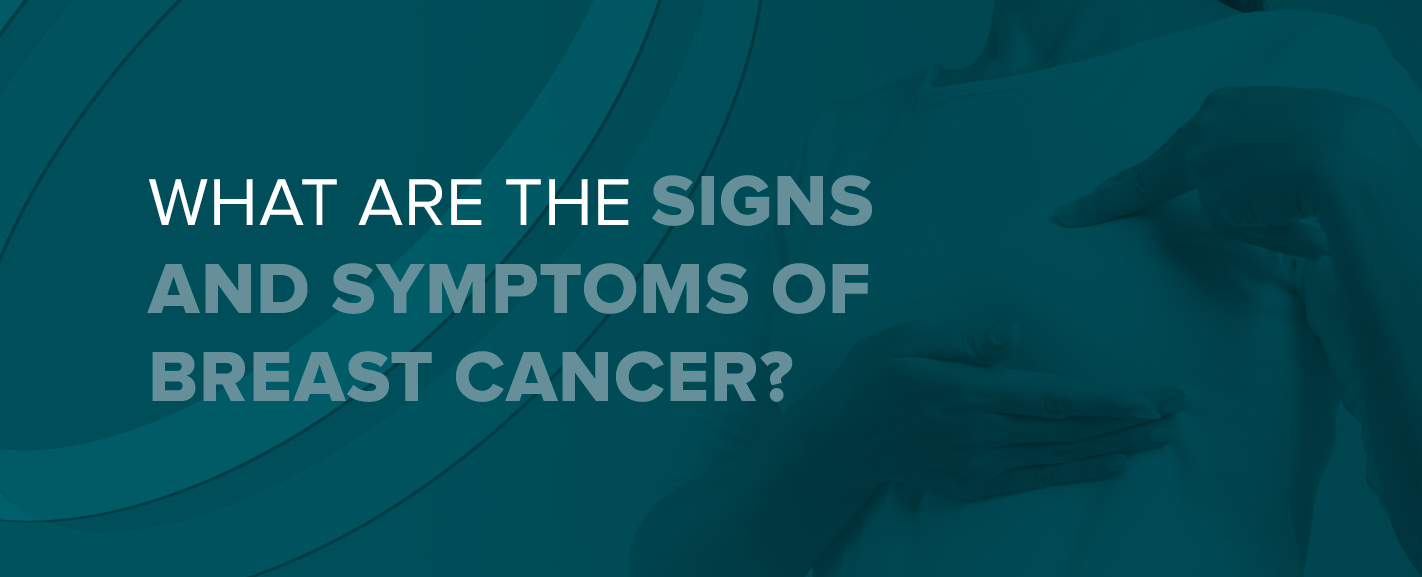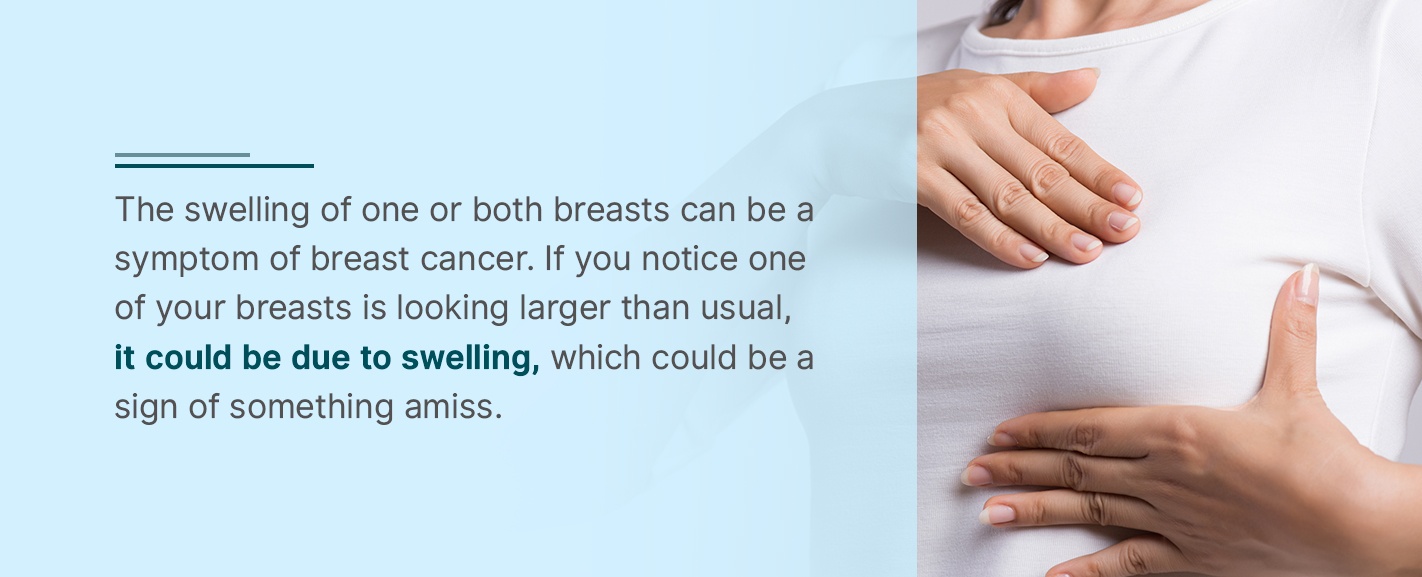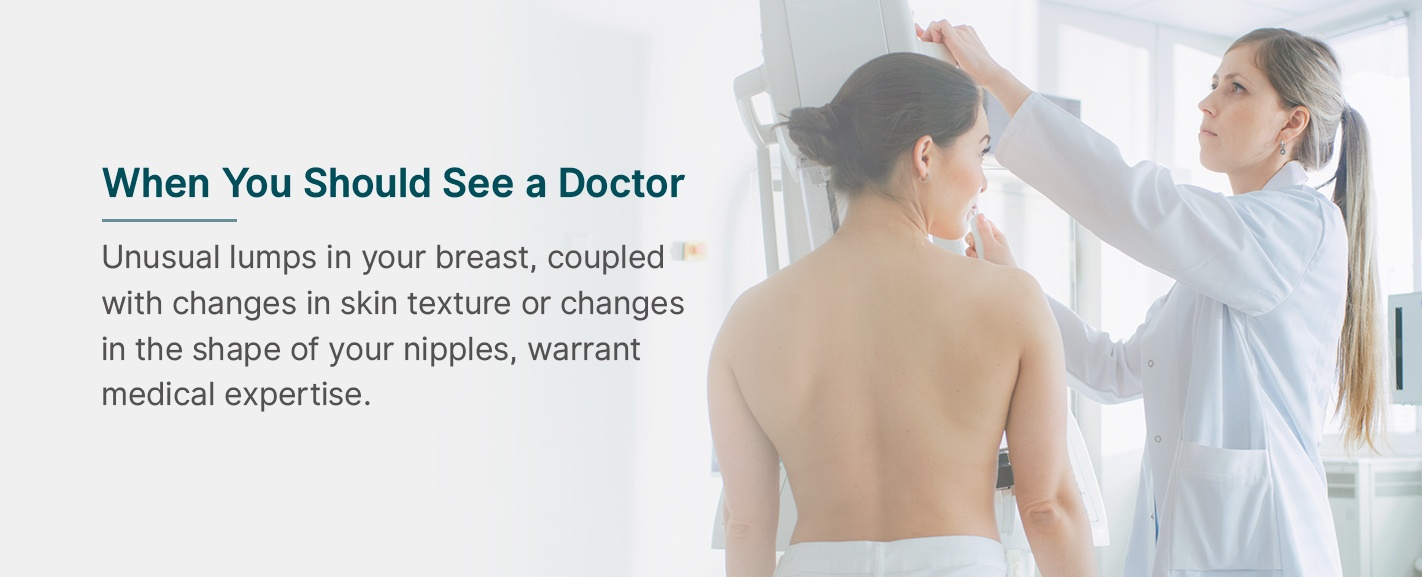What Are the Signs and Symptoms of Breast Cancer?
One of the most common signs of breast cancer is a lump, but the presence of a lump can also indicate something benign, like a cyst. Lumps are also typical for some breasts, and often, people who menstruate find their breasts get lumpier due to the hormonal changes.
It’s essential to understand what are normal and abnormal changes in your body. For example, hormonal changes are notorious for causing all sorts of changes in our bodies, and some of those changes can present as symptoms of breast cancer.
Regular mammograms are the best ways to detect breast cancer symptoms, but you can spot some specific signs on your own.
Early Warning Signs and Symptoms of Breast Cancer
Lumps are the most common symptom of breast cancer, but cancerous lumps feel different than benign lumps. Like lumps, several other signs that could warn of breast cancer may just be the result of hormonal changes.
Self-exams are a smart strategy, since they allow you to get more familiar with your breasts, which then makes you more likely to identify any changes that are out of the ordinary for you. Knowing what’s normal for you is crucial, but so is knowing what is abnormal for anyone.
Here are some of the most obvious signs and symptoms of breast cancer.
Breast Lumps
Cancerous lumps do not only occur in the breasts. Though they may start in the breasts, they could also move to the lymph nodes around the armpits.
Your lymph nodes are rounded systems of tissue that help collect potentially harmful cells, including cancer cells. If a cancerous lump leaves your breast, the first place it ends up moving is to the lymph nodes, so you should check your breasts and armpits for lumps when doing a self-exam.
Cancerous lumps can vary in size and feel, but usually, they are hard, painless and have uneven edges.
Swelling in Your Breasts
Sometimes breasts get tender and swollen during pregnancy, but if you’re not pregnant and find the size of your breasts is changing, it warrants a second look.
The swelling of one or both breasts can be a symptom of breast cancer. Breasts are often not identical to each other, so a variation in size between the two is normal. However, if you notice one of your breasts is looking larger than usual, it could be due to swelling, which could be a sign of something amiss.
A tightness or tingling feeling in the skin, coupled with the change in size, most likely means swelling is present.
Redness on Breast or Nipple
The presence of cancerous cells in the breast can manifest in the form of skin discoloration. If your breasts look bruised or not quite the color they should be, it could be another symptom of breast cancer.
Cancer can result in many changes to your skin, not only discoloration. A change in the texture of the skin on the breast and around the nipple is a warning sign. Itchiness may accompany these changes as well. However, changes in skin color or texture could also be the symptoms of a benign skin condition, so a checkup by a professional is always your best bet.
The first symptom of breast cancer you should have checked out straight away is dimpling. It refers to the bumpy, “pitted” look that the skin of your breast can have, making it look like the skin of an orange. This phenomenon occurs due to a buildup of lymph fluid and can be one of the first signs of an aggressive type of cancer called inflammatory breast cancer.
Breast or Nipple Pain
Though not as common, one of the signs of breast cancer can be pain in the breasts or nipples. Cancerous cells cause changes in the skin cells, especially behind the nipples, which can result in feelings of burning in the breast and nipple areas.
Breast cancer symptoms generally do not cause external discomfort, but it’s crucial to listen to your body, as pain is typically your internal warning system that something isn’t right.
Nipple Discharge
For those who can become pregnant or are breastfeeding, milky discharge from the nipples is common. However, if you are not nursing and you notice an unknown discharge coming from your breasts, it could be another common symptom of breast cancer.
Nipple discharge can be thick or thin and vary in colors, as well. You could see green, yellow or even red discharge, and any of them could be a potential symptom of breast cancer. Have any unusual or unexpected discharge checked out by a health care professional — especially if the discharge is bloody.
The nipples can be excellent oracles for the health of your breasts. While specific changes in the shape and feel of the nipples are normal during various times in the menstrual cycle, one or both nipples seeming to reverse into the breast may be a cause for concern.
When You Should See a Doctor
A best practice is to see your healthcare provider if you have any health concerns. However, many symptoms of breast cancer can also be symptoms of hormonal changes, especially due to menstruation.
If you notice that your breasts get tender and lumpy around the start or end of your menstrual cycle, that’s normal. Everyone’s body reacts differently to changes in hormone levels.
If your breasts tend to hurt or the skin of your breasts is itchy or red and you cannot link the symptoms to anything external — for example, if your bra is not the right size, it can result in painful breasts — it’s best to book an appointment with your health care provider.
Injuries and trauma can also lead to symptoms that look like breast cancer, but are often easily treatable. A prior infection in the breasts, for example, could lead to discoloration or tenderness.
You should always get unusual lumps checked out, but they are not a confirmed sign of breast cancer. Lumps can be a sign of cysts or a fibrocystic breast condition, both of which are treatable. However, unusual lumps in your breast, coupled with changes in skin texture or changes in the shape of your nipples, warrant medical expertise.
What to Expect From Your Doctor
If you’ve ruled out injury, hormonal changes and trauma as potential causes for your symptoms and have decided to seek medical advice, it can be daunting if you don’t know what to expect.
Your health care provider will carry out a clinical breast exam by doing one or both of the following tests.
- Visual: The doctor will ask you to raise or lower your arms so they can see any changes in the size of your breasts and nipples, as well as spot any skin discoloration or dimpling.
- Manual: The doctor will perform a lump check similar to the self-exam by using the pads of their fingers to feel around the breasts, armpits and collarbone for any unusual growths. They may also further example any swollen lymph nodes for signs of other illnesses.
If your doctor sees the need for further tests, they may ask you to book a mammogram.
Schedule Your Mammogram With Envision Imaging or The Women’s Center at Colorado Springs Imaging
If you or your doctor thinks you need a mammogram, the experienced technologists at Envision Imaging and The Women’s Center at Colorado Springs Imaging are here to help.
With multiple locations around the United States, we aim to provide world-class diagnostic services and excellent patient care. We understand each person’s concerns are unique and serious, and we ensure a pleasant experience without sacrificing the quality of care.
Browse our locations to request your next diagnostic imaging appointment. Our world-class facilities, compassionate care and accurate results ensure a pleasant and reliable experience.
Call To Schedule Your Appointment
Sources
- https://www.cancer.gov/types/breast/ibc-fact-sheet
- https://www.medicalnewstoday.com/articles/322832.php#takeaway
- https://www.medicalnewstoday.com/articles/316977.php#what-the-doctor-will-do
- https://www.envrad.com/services/mammography/
- https://www.envrad.com/locations/





